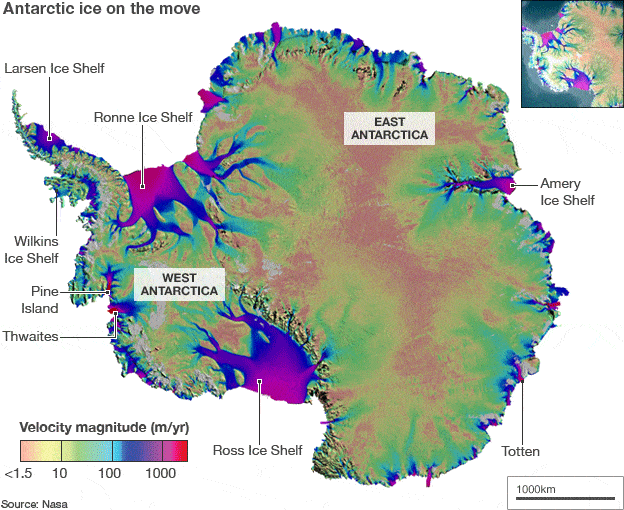
Scientists from Britain have found a remote ice rift valley, up to one mile deep, under the ice in Antarctica. The rift is similar in size and depth to the Grand Canyon and because it is direct contact with the warming ocean, it’s been found that it has a significant contribution to the unusual ice sheet melting of West Antarctica.
The rift lies beneath the Ferrigno Ice Stream on a stretch of coast so remote that it has only been visited once previously in 1961.
“Over the last 20 years we have used satellites to monitor ice losses from Antarctica, and we have witnessed consistent and substantial ice losses from around much of its coastline.”
For some of the glaciers, including Ferrigno Ice Stream, the losses are especially pronounced, and, to understand why, we needed to acquire data about conditions beneath the ice surface,” said Glaciologist and lead author, Dr Robert Bingham.
The ice sheet in West Antarctic is losing ice at a faster rate than any other part of the continent and some glaciers are receding annually by over one metre. Actually, it’s been found that West Antarctica’s thinning ice adds almost 10% to global rises in sea levels. You can imagine this didn’t went unnoticed, so scientists decided to closely investigate the area.
Using a special tower radar mounted on-top of a snowmobile, researchers were able to survey the area through which they traversed, roughly 1,500 miles.
“What we found is that lying beneath the ice there is a large valley, parts of which are approximately a mile deeper than the surrounding landscape,” said Dr Bingham.
“If you stripped away all of the ice here today, you’d see a feature every bit as dramatic as the huge rift valleys you see in Africa and in size as significant as the [US] Grand Canyon.
“This is at odds with the flat ice surface that we were driving across – without these measurements we would never have known it was there.”
After analyzing the valley geometry and correlating the warm ocean with which it is linked, the scientists found that it matches satellite ice thinning data. In the paper, the scientists claim that the Ferrigno Rift is part of a massive rift system that is little understood.
The study is part of the British Antarctic Survey’s Icesheets Programme that investigates how ice sheets change and what effect they have on the rest of the earth, including rises in sea levels. It’s thought that were the entire ice sheets of Antarctica and Greenland to melt, which are 4km thick, sea levels globally would rise by several metres.
The findings were reported in the journal Nature.


